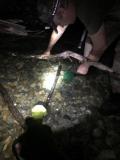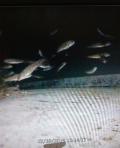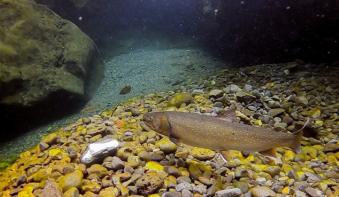What We Know About Upper Yakima Bull Trout Populations: Isolated populations of bull trout living in the Upper Yakima Basin face significant challenges such as blocks to adult migration, degraded instream habitats, and invasive species. Sensitive to warming temperatures, they are also increasingly challenged by a changing climate. As a result, Yakima Basin bull trout populations currently consist of low numbers of adult spawners. Extreme seasonal dewatering presents an additional challenge, resulting in frequent stranding and desiccation of juveniles. The Yakama Nation's Yakima Basin Bull Trout Restoration and Monitoring Project currently consists of two phases, Phase I is considered a life boat strategy. The process of juvenile capture, rearing and release needed to be proven before additional phases could be implemented. Phase II consists of rearing and releasing bull trout into tributaries that offer hope for self- sustainability. These new populations may prove vital in buffering the Yakima Basin population from extinction.
During Phase 1 of the project, conducted during 2019, Yakama Nation Fisheries (YNF) was assisted by Washington Department of Fish and Wildlife (WDFW) in expanding current rescue operations in Gold Creek and the Upper Kachess River. YNF finalized permitting and initiated captive rearing, releasing fish back into their native reservoir habitats. YNF also installed and operated PIT (passive integrated transponder) tag arrays to monitor fish movement, and assisted WDFW with annual redd surveys. PIT tag arrays are receivers that help our biologists to monitor tagged fish over time to determine movement, survival, and spawning success. Focal areas for monitoring include Gold Creek, the Upper Kachess River, and Box Canyon Creek.
During Phase 2, YNF has been planning our expanded project implementation and obtaining permits to reintroduce bull trout back into their historic habitats, utilizing the South Fork Tieton River as a potential donor population. Our biologists have also been working on a pilot study to eradicate brook trout (a non-native invasive competitor and hybridizer with bull trout) using YY-male technology, which negatively impacts brook trout reproductive success.
Funding for this project is secured through the Yakima Basin Integrated Plan (YBIP) and provided by the U.S. Bureau of Reclamation and Washington State Department of Ecology. In addition to the YNF staff listed, recognition is due to Richard Visser, Reseach Scientist with the U.S. Bureau of Reclamation, and Jeff Tayer, former WDFW Region 3 Director, for their contributions to the project.
See this article on the Bull Trout Project in The Daily Record (Feb. 6, 2021): Bull trout reintroduction project aims to reinvigorate species in Upper Yakima Basin
Project Videos:
Status: Active
09/23/2020 - PresentProject Manager
- Todd Newsome , YKFKP Fisheries Research Scientist IV







